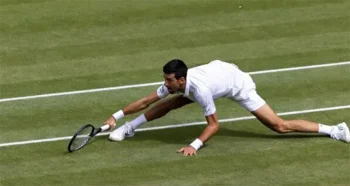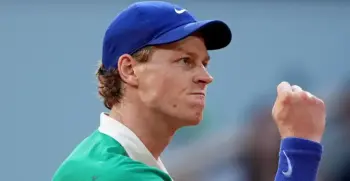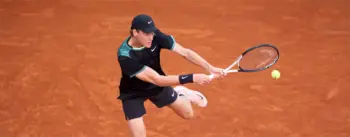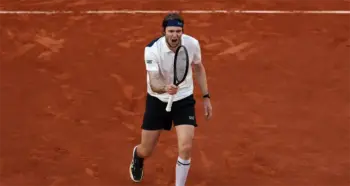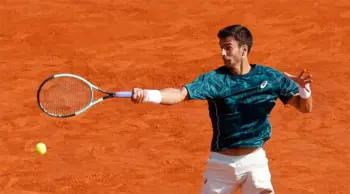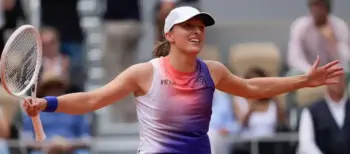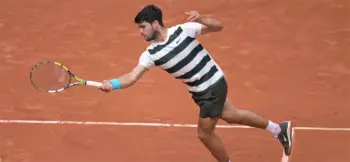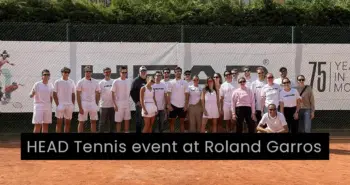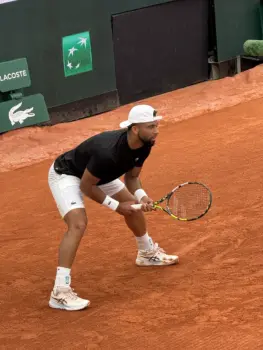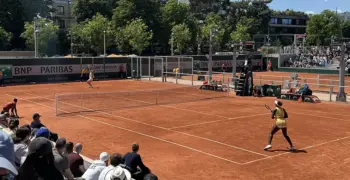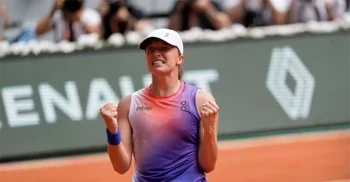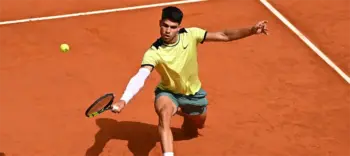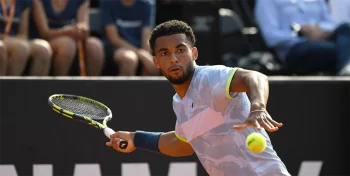Clay may not be the most popular tennis surface, but there’s a certain time of year when all eyes are on the red dirt. From late May to early June, the French Open – the year’s only clay Grand Slam – dominates the tennis world. Also known as ‘Roland Garros’, this clay event is no stranger to major upsets. Some iconic tennis matches that last for hours have been played there over the years, making it one of the most interesting majors in the calendar.
When is the 2025 Roland Garros? – Sunday, May 25th – Sunday, June 8th
More resources:
Latest from our blogs – More on Roland Garros
History of the French Open
There is a reason why the French Open is one of the four biggest tennis events in the world and it’s partly due to being one of the oldest. It started way back in 1891 which makes the tournament 133 years old. Much like the US Open, it’s one of the oldest fixtures in tennis.
The tournament started as the flagship event for members of French tennis clubs, and has never changed its hosting nation, always remaining quintessentially French. Even though it never moved out of France, there were a few places that hosted it.
At first, it was held at the Puteaux Tennis Club where it remained for three years before moving to Bordeaux for over a decade. After 13 years in Bordeaux, the event moved back to Paris where it would remain ever since.
The venues changed when it returned to Paris in 1901, but ever since 1928, it’s been held at the current venue – Roland Garros. The facilities were expanded over the years and renovated, becoming some of the best in the world.
Below, Mr Tennisnerd cruising around the courts at the 2025 Roland Garros:
Tennisnerd at Roland Garros ????? pic.twitter.com/PQqVkrPVsm
— Tennisnerd.net (@Tennisnerdnet) June 2, 2025
French Open Venue and Attendance
There are 18 courts, some of them rather iconic as we listed them out below. The main courts at Roland Garros are:
- Court Philippe Chatrier – 15 000 capacity
- Court Suzanne Lenglen – 10,068 capacity
- Court Simonne Mathieu – 5 000 capacity
While the complex didn’t have a roof for most of its history, two roofs have been added recently—one on Philippe Chatrier and one on Suzanne Lenglen. Due to being located in Paris, it generally attracts large crowds.
The city is one of the most visited anyway, so it’s no wonder that north of 600,000 people attend the event each year.
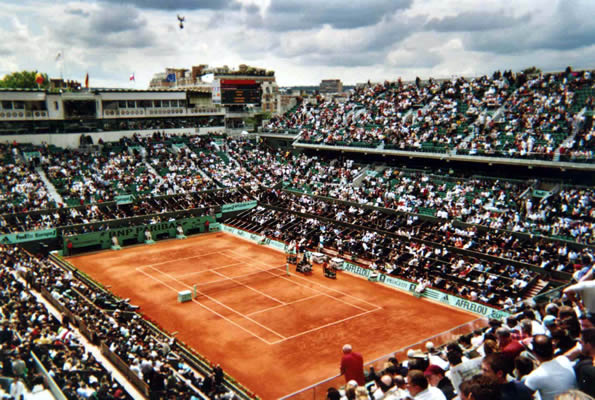
What Is the French Open Crowd Famous For?
The French Open is known for passionate crowds, especially when native French players play. It’s not too dissimilar from some of the other atmospheres in the world, notably Spain and Argentina.
It did get a bit out of line in recent years as the 2023 version became rather infamous. The crowd was very rowdy in a few matches, resulting in some players complaining about it. David Goffin notably alleged that he was spat on during a match with Giovanni Mpetshi Perricard.
Taylor Fritz was heavily booed during his match with Arthur Rinderknech, and it got so bad that tournament director Amélie Mauresmo had to intervene. Alcohol was also banned for the next edition in 2024, as it likely contributed to the rowdiness.
What is the French Open Prize Money?
Prize money has never stood still in tennis. Over the years, it has grown considerably, and these days it’s far more than it ever was.
As a Grand Slam, it has some of the biggest prize money out there.
Now the confirmed prize money for the 2025 Roland Garros has been announced, as below:
Total prize pool of €56,352,000.
Singles, men and women
| Winner | €2,550,000 |
| Runner-up | €1,275,000 |
| SF | €690,000 |
| QF | €440,000 |
| R4 | €265,000 |
| R3 | €168,000 |
| R2 | €117,000 |
| R1 | €78,000 |
Doubles, men and women (per pair)
| Winner | €590,000 |
| Runner-up | €295,000 |
| SF | €148,000 |
| QF | €80,000 |
| R3 | €43,500 |
| R2 | €27,500 |
| R1 | €17,500 |
Ranking Points
As a Grand Slam, big ranking points are up for grabs at the French Open. Here’s a look at how these are allocated:
| Info | Winner | Finalist | Semifinal | Quarters | Round of 16 | Round of 32 | Round of 64 | Round of 128 | Q | Q3 | Q2 | Q1 |
| Men’s singles | 2000 | 1300 | 800 | 400 | 200 | 100 | 50 | 10 | 25 | 16 | 8 | 0 |
|---|---|---|---|---|---|---|---|---|---|---|---|---|
| Men’s doubles | 0 | — | — | — | — | — | ||||||
| Women’s singles | 1300 | 780 | 430 | 240 | 130 | 70 | 10 | 40 | 30 | 20 | 2 | |
| Women’s doubles | 10 | — | — | — | — | — |
Past French Open Champions
Here’s a look back at who has found success in Paris over the past five years in all events:
Men’s Singles French Open Champions
- 2020 – Rafael Nadal
- 2021 – Novak Djokovic
- 2022 – Rafael Nadal
- 2023 – Novak Djokovic
- 2024 – Carlos Alcaraz
Women’s Singles French Open Champions
- 2020 – Iga Swiatek
- 2021 – Barbora Krejcikova
- 2022 – Iga Swiatek
- 2023 – Iga Swiatek
- 2024 – Iga Swiatek
Men’s Doubles French Open Champions
- 2020 – Krawietz/Mies
- 2021 – Hugues-Herbert/Mahut
- 2022 – Arevalo/Rojer
- 2023 – Dodig/Krajicek
- 2024 – Arevalo/Pavic
Women’s Doubles French Open Champions
- 2020 – Babos/Mladenovic
- 2021 – Mertens/Sabalenka
- 2022 – Krejcikova/Siniakova
- 2023 – Krejcikova/Siniakova
- 2024 – Gauff/Siniakova
Mixed Doubles French Open Champions
- 2020 – No competition
- 2021 – Krawczyk/Salisbury
- 2022 – Shibahara/Koolhof
- 2023 – Kato/Puetz
- 2024 – Siegemund/Roger-Vasselin
French Open Records
Here are a few interesting records related to the French Open:
- Rafael Nadal has won the most singles trophies at the event ever (14).
- Nadal is the only player to have won over 100 matches at Roland Garros.
- Nadal is the only player to have won 10+ Roland Garros events.
- Novak Djokovic is the only player to have beaten Nadal twice at Roland Garros.
- Chris Evert has the most French Open trophies of all females (7).
- The youngest singles champion at the French Open is not Rafael Nadal, but rather Michael Chang who was 17 years and three months old when he won it.
What is Kids’ Day at the French Open?
While the US Open has Fan Week, the French Open has a prominent kids’ day that features lots of activities including former and current players, games, music, and lots more.
It’s a great chance to give the youngest among us a chance to enjoy some fun activities ahead of the proper event kicking off.
What is the Most Memorable Match in French Open History?
While there seems to be a consensus on a few matches, we’re going with one that probably had the biggest impact on tennis history. In 2009, Rafael Nadal was expected to win the French Open.
It was pretty standard stuff. He was the best on clay and nobody came close. That is, until Robin Soderling did the unthinkable by beating Nadal in the fourth round. It was the first time he had been beaten at the French Open, which is history in itself.
But more importantly, it was what allowed Roger Federer to win his only French Open. The Swiss ace beat Soderling in the final to do so, but if the Swede didn’t beat Nadal, Federer likely would have finished his career without a single French Open.
That would have a lasting impact on his legacy, much like winning it did. Had Soderling not beaten Nadal, it likely would have never happened.
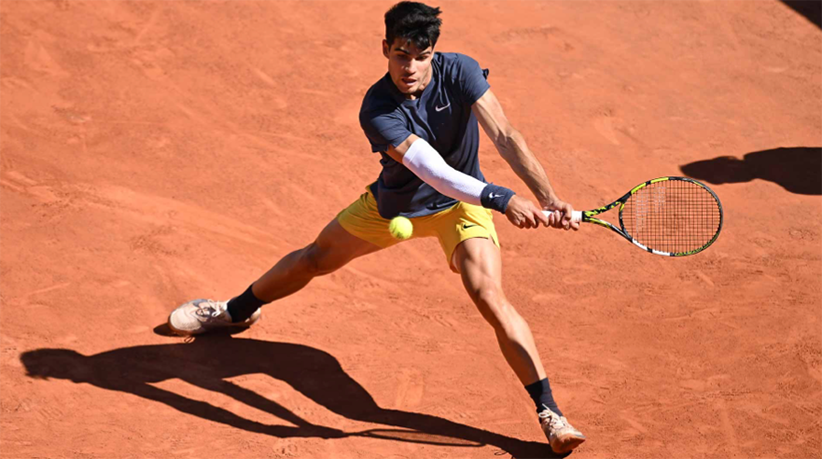
Interesting Facts About the French Open
Before we leave, here are some interesting facts you might not know about the French Open:
- As mentioned above, it is the only Grand Slam played on clay which is a rather prominent surface in the calendar as most events during the summer are clay events.
- Despite the event and complex being named after a French aviator and war hero Roland Garros, he himself held very little interest in tennis.
- It’s the most physically demanding Grand Slam due to the slowness of the court which is why most matches tend to be on the long side.
- The trophies are actually made entirely out of silver featuring no gold whatsoever.

